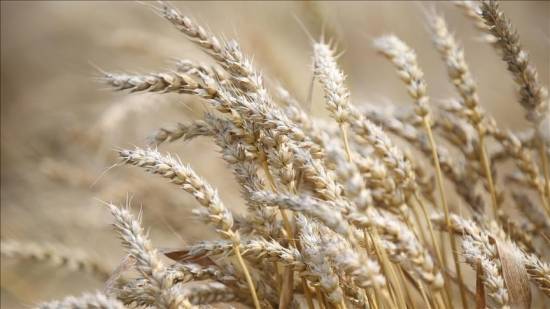Global food prices slightly down in May but still close to record high Featured
Global food prices went down modestly in May for the second consecutive month, although prices of wheat and poultry rose, the UN’s Food and Agriculture Organization (FAO) said on Friday.
The FAO Food Price Index, which tracks monthly changes in the international prices of a basket of commonly-traded food commodities, dropped 0.6% month-on-month to 157.4 in May of 2022, yet still close to a record high of 159.7 points hit in March.
Main decreases were observed in the vegetable oil index (3.5%), amid lower prices across palm, sunflower, soy, and rapeseed oils, due to the removal of Indonesia's export ban on palm oil.
The dairy price index also went down 3.5%, the first decline in eight months.
“Prices of milk powders declined the most, linked to market uncertainties from the continued COVID-19 lockdowns in China, while robust retail sales and high demand from restaurants in the Northern Hemisphere prevented cheese prices from falling significantly despite weakened global import demand,” FAO said.
The sugar price index diminished 1.1% as a bumper crop in India buoyed global availability prospects.
“The weakening of the Brazilian real against the US dollar, along with lower ethanol prices, also pressured world sugar prices downwards,” FAO said.
Meanwhile, meat prices saw a new all-time high, increasing by 0.6% in May even as world bovine meat prices remained stable and those of pig meat fell.
The rise in prices is due to continued supply chain disruptions in Ukraine and recent cases of avian influenza amid a surge in demand in Europe and the Middle East.
"Export restrictions create market uncertainty and can result in price spikes and increased price volatility, the decrease in oilseeds prices shows how important it is when they are removed and let exports flow smoothly," FAO Chief Economist Maximo Torero Cullen said in a statement.
Global cereal output likely to decrease
Also, early prospects for global cereal production in 2022 now point to a likely decrease, the first in four years, to 2.8 million tons, down 16 million tons from the record output estimated for 2021, according to FAO’s latest Cereal Supply and Demand Brief.
"The largest decline is foreseen for maize, followed by wheat and rice, while barley and sorghum outputs will likely increase. The forecasts are based on conditions of crops already in the ground and planting intentions for those yet to be sown," it said.
World cereal utilization is also predicted to diminish marginally in 2022/23, by around 0.1% from 2021/22 to 2.8 million tons, marking the first contraction in 20 years.
"The decline mainly stems from foreseen decreases in the feed use of wheat, coarse grains and rice, while global food consumption of cereals is expected to increase, keeping pace with world population trends."
World trade in cereals is projected to decline by 2.6% from the 2021/22 level to 463 million tons, a three-year low, even as prospects for international trade of rice remain positive./aa


